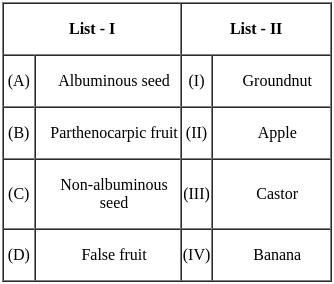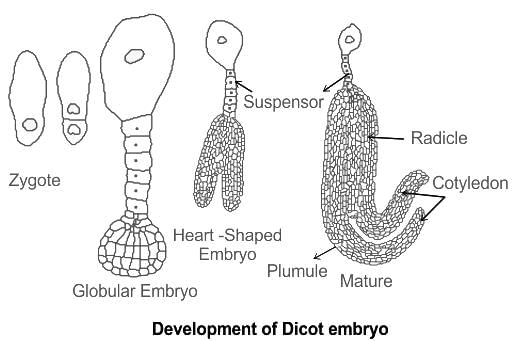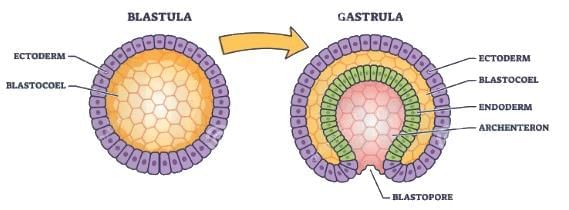Biology: CUET Mock Test - 1 - CUET MCQ
30 Questions MCQ Test CUET Mock Test Series - Biology: CUET Mock Test - 1
What is the term used to describe genetic and morphologic similarities between different individuals?
What will be the number of chromosomes in the gamete of maize if its meiocyte contains 20 chromosomes?
Which of the following structure is not an example of asexual reproduction?
Match List - I with List - II.

Choose the correct answer from the options given below:
Polyembryony Means:
I. Occurrence of Single Embryo in the seed
II. No occurrence of embryo in the seed
III. Occurrence of more than one embryo in the seed
Choose the correct sequence of embryo development in a dicot plant
The process in which the three germ layers form is called -
What is phase when the organism is old enough to reproduce known as?
In which plant species is it difficult to define the different phases (juvenile, reproductive phase)?
What are the male organs in a flowering plant called?
What are animals in which zygote development happens outside the body called?
Which of the following is a vegetative propagation by sub aerial stems?
What are animals in which zygote formation takes place in the body called?
|
8 docs|148 tests
|






















